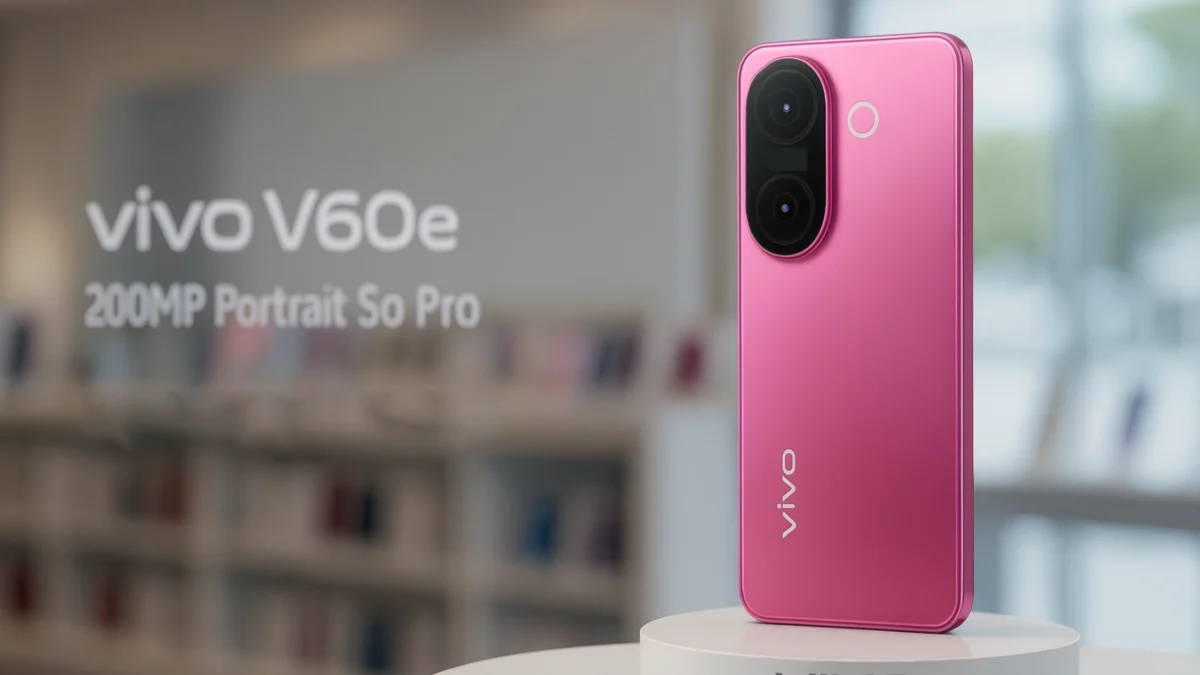When you think “200 MP camera,” you probably picture an ultra-expensive flagship phone. But Vivo’s upcoming V60e is breaking that rule, bringing a huge sensor into a mid-range device. The question is — why would Vivo make this move, and does it really matter for everyday users?
What the V60e Brings to the Table
Here’s what we know so far from teasers and leaks:
- 200 MP main camera with OIS (optical image stabilization)
- 50 MP selfie camera with autofocus + 8 MP ultra-wide
- 6,500 mAh battery with 90 W fast charging
- IP68/IP69 protection against dust, water, and drops
- AI tricks: Festival Portrait, Four-Season Portrait, Image Expander
These details were highlighted on Vivo’s official teaser page, showing how the brand is positioning the phone as “flagship-level” within a lower price bracket.
Why 200 MP in the First Place?
Vivo isn’t just chasing numbers. There are a few reasons this move makes sense:
- Standout Factor
In a crowded mid-range market, a 200 MP headline spec instantly sets the V60e apart. - Zoom & Cropping Power
With more pixels, you can zoom or crop without losing as much clarity — something photography enthusiasts will notice. - AI + Processing
High-resolution sensors give AI more “data” to work with, powering smarter filters and portrait modes. - Redefining Mid-Range
Vivo is pushing the idea that you don’t need a ₹70K+ phone for top-tier photography features, a point echoed by GSM Arena’s early coverage.
But Here’s the Catch
Big numbers don’t always mean big results. Some possible trade-offs:
- Low-light risks: More megapixels can mean smaller pixel size, which isn’t always great at night.
- Storage demands: 200 MP shots are large — cloud backup or extra space will be important.
- Battery/heat: Processing huge images could drain power or warm the phone.
- Marketing vs. reality: If everyday photos don’t look visibly better, the feature may be dismissed as a gimmick.
Analysts point out that megapixel jumps in the past haven’t always led to real-world improvements, something The Economic Times also raised in its preview.
What This Means for You
For everyday users, the V60e’s promise is freedom: you can crop tighter, zoom digitally, and still get photos sharp enough to share. The large battery and durability rating also make it practical — not just a “camera phone.”
But the real test will be in night shots and motion photography. If Vivo nails those, the V60e could raise expectations for all mid-range phones. Tech blogs like India Today have noted that this phone might push rivals to catch up quickly.
Frequently Asked Questions (FAQs)
Q1: Will the V60e always shoot at 200 MP?
No. Like most phones, it will default to a pixel-binned mode (lower MP with better low-light performance). Full 200 MP mode will be optional.
Q2: How much storage will 200 MP photos take?
Quite a bit. Expect larger file sizes — Vivo may include optimization, but cloud use will likely be recommended.
Q3: When is the launch?
Reports suggest an India debut very soon, with pricing likely under ₹40,000, according to 91Mobiles.
Why This Matters
If Vivo delivers, the V60e could change how we define “mid-range” — making it less about compromise and more about choice. Competitors may be forced to respond, and that’s good news for consumers.
Key Takeaway
The Vivo V60e isn’t just about megapixels — it’s about shifting expectations. By blending flagship-level photography with mid-tier pricing, Vivo is betting that users want more than “good enough.” Whether that gamble pays off will depend on how well the camera performs in real-world use.
Last Updated on October 18, 2025 by Lucy




